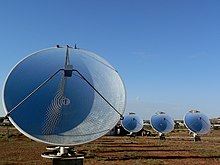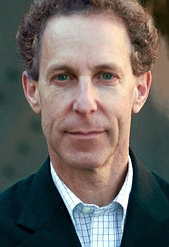Introduction Renewable energy (or green energy) is energy from renewable natural resources that are replenished on a human timescale. Using renewable energy technologies helps with climate change mitigation, energy security, and also has some economic benefits. Commonly used renewable energy types include solar energy, wind power, hydropower, bioenergy and geothermal power. Renewable energy installations can be large or small. They are suited for urban as well as rural areas. Renewable energy is often deployed together with further electrification. This has several benefits: electricity can move heat and vehicles efficiently, and is clean at the point of consumption. Variable renewable energy sources are those that have a fluctuating nature, such as wind power and solar power. In contrast, controllable renewable energy sources include dammed hydroelectricity, bioenergy, or geothermal power. Renewable energy systems are rapidly becoming more efficient and cheaper. As a result, their share of global energy consumption is increasing. A large majority of worldwide newly installed electricity capacity is now renewable. In most countries, photovoltaic solar or onshore wind are the cheapest new-build electricity. Renewable energy can help reduce energy poverty in rural and remote areas of developing countries, where lack of energy access is often hindering economic development. Renewable energy resources exist all over the world. This is in contrast to fossil fuels resources which are concentrated in a limited number of countries. There are also other renewable energy technologies that are still under development, for example enhanced geothermal systems, concentrated solar power, cellulosic ethanol, and marine energy. From 2011 to 2021, renewable energy grew from 20% to 28% of global electricity supply. Use of fossil energy shrank from 68% to 62%, and nuclear from 12% to 10%. The share of hydropower decreased from 16% to 15% while power from sun and wind increased from 2% to 10%. Biomass and geothermal energy grew from 2% to 3%. In 2022, renewables accounted for 30% of global electricity generation, up from 21% in 1985. Many countries around the world already have renewable energy contributing more than 20% of their total energy supply. Some countries generate over half their electricity from renewables. A few countries generate all their electricity from renewable energy. National renewable energy markets are projected to continue to grow strongly in the 2020s and beyond. The deployment of renewable energy is being hindered by massive fossil fuel subsidies. In 2022 the International Energy Agency (IEA) requested all countries to reduce their policy, regulatory, permitting and financing obstacles for renewables. This would increase the chances of the world reaching net zero carbon emissions by 2050. According to the IEA, to achieve net zero emissions by 2050, 90% of global electricity generation will need to be produced from renewable sources. Whether nuclear power is renewable energy or not is still controversial. There are also debates around geopolitics, the metal and mineral extraction needed for solar panels and batteries, possible installations in conservation areas and the need to recycle solar panels. Although most renewable energy sources are sustainable, some are not. For example, some biomass sources are unsustainable at current rates of exploitation. (Full article...) Selected article - Renewable energy in Australia is mainly based on biomass, solar, wind, and hydro generation. Over a third of electricity is generated from renewables, and is increasing, with a target to phase out coal power before 2040. Wind energy and rooftop solar have particularly grown since 2010. The growth has been stimulated by government energy policy in order to limit the rate of climate change in Australia that has been brought about by the use of fossil fuels. Pros and cons of various types of renewable energy are being investigated, and more recently there have been trials of green hydrogen and wave power. Australia ratified the Kyoto protocol in 2007, and in 2016 became a party to the Paris Agreement, an international agreement which binds member countries to address climate change. However, the level of fossil fuel subsidies in Australia is still disputed. The Australian Renewable Energy Agency (ARENA) was established as an independent government agency in 2012 to improve the competitiveness of renewable energy technologies and to encourage innovation in the industry. renewable energy is seen as a good investment, and many companies operate in Australia, including BP Solar, Eurosolar, Hydro Tasmania, Origin Energy, and Pacific Blue. (Full article...)Quotations -
Main topicsRenewable energy sourcesGeneralRenewable energy commercialization · Smart grid · Timeline of sustainable energy research 2020–present Renewable energy by countryList of countries by electricity production from renewable sources
WikiProjectsWikiProjects connected with renewable energy: Selected image -Selected biography - Dan William Reicher is an American lawyer who was U.S. Assistant Secretary of Energy for Energy Efficiency and Renewable Energy at the U.S. Department of Energy (DOE) in the Clinton Administration. Reicher is currently executive director of the Steyer-Taylor Center for Energy Policy and Finance at Stanford University, a joint center of the Stanford Graduate School of Business and Stanford Law School, where he also holds faculty positions. Reicher joined Stanford in 2011 from Google, where he served since 2007 as Director of Climate Change and Energy Initiatives for the company's venture Google.org. Reicher also served as an advisor to the 2008 Obama campaign and a member of the Obama Transition Team where he focused on the energy portions of the Obama stimulus package. (Full article...)Did you know? -... that efficient energy use is most often achieved by adopting a more efficient technology or production process ? Energy efficient buildings, industrial processes and transportation could reduce the world's energy needs in 2050 by one third, and help controlling global emissions of greenhouse gases, according to the International Energy Agency. Energy efficiency and renewable energy are said to be the twin pillars of sustainable energy policy. General images -The following are images from various renewable energy-related articles on Wikipedia.
Related portalsCategoriesAssociated WikimediaThe following Wikimedia Foundation sister projects provide more on this subject:
Discover Wikipedia using portals |











![Image 8Concentrated solar panels are getting a power boost. Pacific Northwest National Laboratory (PNNL) will be testing a new concentrated solar power system – one that can help natural gas power plants reduce their fuel usage by up to 20 percent.[needs update] (from Solar energy)](http://upload.wikimedia.org/wikipedia/commons/thumb/8/82/Photo_of_the_Week-_Boosting_Solar_Technology_%288722948189%29.jpg/120px-Photo_of_the_Week-_Boosting_Solar_Technology_%288722948189%29.jpg)




































































